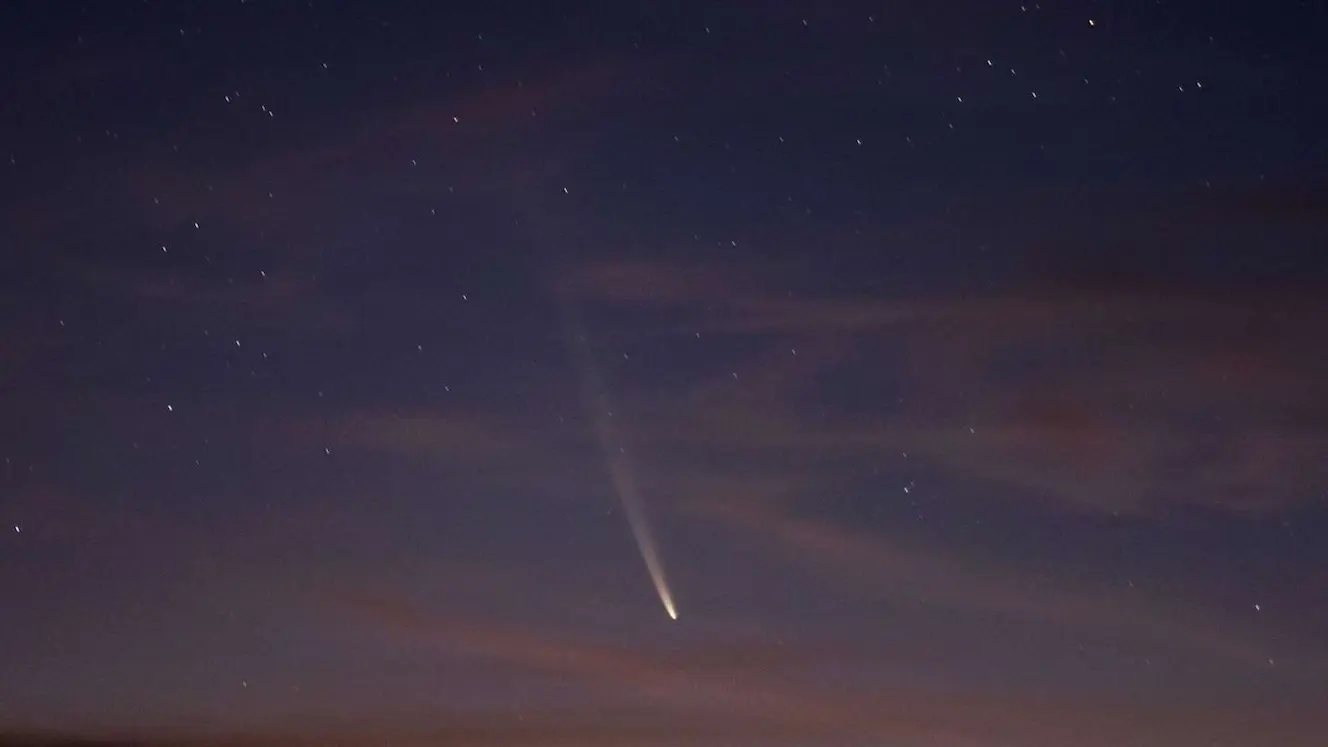Comet Sightings in Singapore: What to Expect This October

As October unfolds, Singaporean stargazers are in for an exciting treat with the anticipated appearance of Comet C/2023 A3 (Tsuchinshan-ATLAS). This celestial event promises to captivate both amateur and seasoned astronomers alike. In this article, we will explore the details surrounding the comet’s visibility, optimal viewing times, and tips for making the most of this astronomical spectacle.
Understanding Comets
What is a Comet?
Comets are fascinating celestial bodies composed of ice, dust, and rocky material that orbit the Sun. They originate from the outer regions of our solar system and are often referred to as “dirty snowballs.” When a comet approaches the Sun, it heats up, causing its ices to vaporise and release gas and dust, which form a glowing coma and a tail that can stretch millions of kilometres away from the nucleus. The nucleus of a comet can vary in size, typically ranging up to 16 km across.
Comet C/2023 A3 (Tsuchinshan-ATLAS)
Discovered in early 2023, Comet C/2023 A3 is expected to be one of the brightest comets visible from Earth this year. It has garnered attention due to its potential for visibility with the naked eye during specific periods in October 2024. The comet’s name derives from its discovery location at Tsuchinshan Observatory in China, and it is classified as a long-period comet with an orbital period that takes it far beyond Neptune.
When to See the Comet in Singapore
Early October Visibility
The comet was first spotted in Singapore on September 25, 2024, during early morning hours. Observers reported sightings around Paya Lebar and Lakeside as early as 5:45 AM. However, during this initial phase, it was primarily visible through binoculars rather than with the naked eye.
For those eager to catch a glimpse before its peak visibility, the comet will be observable in the early mornings until October 5. Stargazers should look towards the eastern horizon around dawn for optimal viewing conditions.
Peak Visibility from October 11 to 19
The most exciting period for comet sightings in Singapore will occur between October 11 and 19. During these evenings, Comet C/2023 A3 is expected to be bright enough to be seen without optical aids. The comet will reach its closest approach to Earth on October 12, at a distance of approximately 70.7 million km, making it particularly prominent in the night sky.
Key Dates for Stargazers
- October 11-19: Best viewing opportunities in the evening sky.
- October 12: Closest approach to Earth.
- October 17: Virtual viewing session hosted by Science Centre Singapore from 7 PM to 8 PM (weather permitting) on YouTube.
How to Observe the Comet
Optimal Viewing Conditions
To successfully observe Comet C/2023 A3 during its peak visibility:
- Location: Choose a spot with minimal light pollution and an unobstructed view of the western horizon.
- Timing: Plan your observation shortly after sunset when the sky is still dark.
- Equipment: While binoculars may enhance your experience by providing clearer views of the comet’s tail, it may still be visible without them during peak nights.
Tips for Stargazing
- Use Stargazing Apps: Download mobile applications that provide real-time tracking of celestial objects. These can help pinpoint the comet’s location each night.
- Check Weather Conditions: Clear skies are essential for optimal viewing. Keep an eye on local weather forecasts leading up to your planned observation dates.
- Photography: If you’re interested in capturing images of the comet, bring a camera with manual settings and a tripod for stability during long exposure shots.
Additional Celestial Events in October
Alongside the comet sightings, October offers several other astronomical phenomena that enhance stargazing opportunities:
Supermoon
A supermoon will occur on October 14, when the Moon appears larger and brighter than usual due to its proximity to Earth. This event not only provides a stunning backdrop for comet observations but also creates ideal conditions for night-time photography.
Meteor Showers
The Orionid meteor shower peaks around October 20-21, offering stargazers additional opportunities to witness shooting stars streaking across the sky. This meteor shower is known for its bright meteors and can produce up to 20 meteors per hour under optimal conditions.
Engaging with the Community
Stargazing can be a more enriching experience when shared with others. Here are some ways you can engage with fellow astronomy enthusiasts during this exciting month:
Join Local Astronomy Clubs
Consider joining local astronomy clubs or societies that often host events and gatherings during significant celestial events. These clubs provide access to telescopes, expert guidance, and opportunities for group observations.
Participate in Online Forums
Engage with online communities such as Reddit or Facebook groups dedicated to astronomy in Singapore. Sharing experiences and tips can enhance your understanding of celestial events and connect you with like-minded individuals.
Attend Public Viewing Events
Keep an eye out for public viewing events organised by institutions like Science Centre Singapore or local observatories. These events often feature expert talks and guided observations that can enrich your stargazing experience.
Conclusion
October is shaping up to be an exhilarating month for astronomy lovers in Singapore with the visibility of Comet C/2023 A3 (Tsuchinshan-ATLAS). By planning ahead and taking advantage of optimal viewing conditions, you can witness this spectacular event alongside other celestial occurrences such as supermoons and meteor showers.
Whether you’re an experienced stargazer or just beginning your journey into astronomy, this is an opportunity not to be missed. As we prepare for these cosmic displays, remember to share your experiences and photographs with fellow enthusiasts online.
Happy stargazing!

Huawei Releases the ISP/MSP Business Success Driven by RAMS White Paper

Siam Paragon Bangkok Watch Week 2025 Opens with a Historic Celebration

Apical Joins Industry Leaders to Launch Aceh Sustainable Palm Oil Working Group

G-Dragon Pop-up Exhibition in Singapore - Ubermensch at Jewel

BLACKPINK Adds Historic Third Night to Deadline Concert in Singapore This November

Lando Norris in Singapore: McLaren Star at Ralph Lauren Pop-Up Sept 30

Mid Autumn Festival Singapore 2025 Complete Guide

Huawei Releases the ISP/MSP Business Success Driven by RAMS White Paper

Siam Paragon Bangkok Watch Week 2025 Opens with a Historic Celebration

Apical Joins Industry Leaders to Launch Aceh Sustainable Palm Oil Working Group







